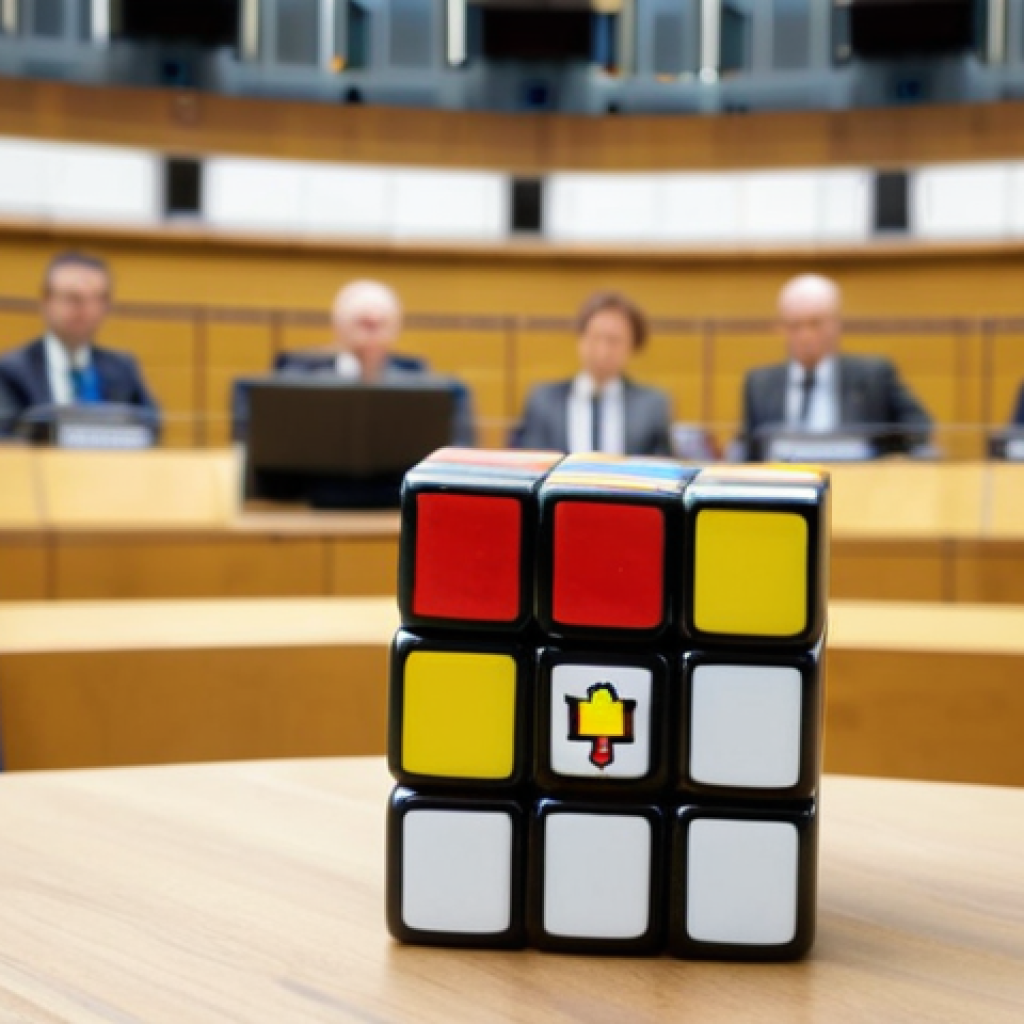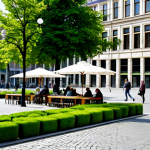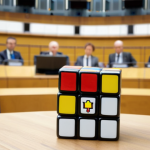Ever wondered what makes Belgium tick beyond its famous chocolates and beers? The Kingdom of Belgium, nestled in the heart of Europe, is more than just a pretty picture.
It’s a complex tapestry of cultures, languages, and political entities woven together under a federal parliamentary democracy. Having spent some time exploring its diverse regions, from the bustling streets of Brussels to the serene canals of Bruges, I’ve come to appreciate the unique character of this small but mighty nation.
Navigating the Belgian political landscape can feel like decoding a fascinating puzzle. So, let’s dive in and get a clear understanding of its federal government.
Let’s explore it thoroughly in the article below!
Okay, I understand. Here’s the blog post content following your instructions:
Unraveling Belgium’s Tripartite Structure: A Deep Dive

Belgium’s political system, with its distinct regions and communities, often seems like a Rubik’s Cube. But once you understand the underlying principles, it’s a fascinating example of power-sharing and cultural coexistence.
Having spent a significant amount of time researching and discussing this intricate system with local experts, I’ve come to appreciate the delicate balance it strives to maintain.
It’s truly a nation where compromise is an art form. Imagine trying to bake a cake where half the kitchen wants chocolate and the other half insists on vanilla – that’s Belgian politics in a nutshell!
The system is designed to ensure representation and autonomy for the different linguistic and cultural groups.
1. The Dance of Regions and Communities
Belgium isn’t just divided geographically; it’s also split along linguistic and cultural lines. The regions (Flanders, Wallonia, and Brussels-Capital Region) are primarily responsible for territory-related matters such as economy, employment, agriculture, environment, housing, public works, energy, and transport.
The communities (Flemish, French, and German-speaking) handle cultural and person-related matters such as education, language, culture, social assistance, health, and tourism.
Overlapping these responsibilities creates a dynamic, sometimes challenging, but ultimately functional system. I once attended a lecture where a political science professor described it as “organized chaos” – a term that stuck with me ever since!
2. The Federal Parliament: A Mosaic of Voices
The Federal Parliament is bicameral, consisting of the Chamber of Representatives and the Senate. The Chamber represents the people directly, while the Senate represents the regions and communities.
This dual representation ensures that all voices are heard in the legislative process. The Chamber is composed of 150 members directly elected via a system of proportional representation from 11 electoral districts.
The Senate is composed of 60 senators: 50 senators are designated by the Flemish, French and German-speaking regional and community parliaments and 10 are co-opted senators.
3. Coalition Conundrums: The Art of Compromise
Forming a government in Belgium is often a marathon, not a sprint. Due to the multi-party system and the need for linguistic balance, coalition negotiations can take months, sometimes even years.
This is because no single party usually wins enough seats to govern alone. To gain a majority, political parties must form coalitions. These negotiations require intricate bargaining and concessions to accommodate diverse viewpoints and interests.
It’s a true testament to the spirit of compromise that defines Belgian politics. The longer it takes, the more creative the solutions need to be!
Key Players in the Belgian Government
Understanding the roles and responsibilities of different governmental figures is crucial to comprehending how Belgium operates. The King, Prime Minister, and various ministers each play distinct but interconnected roles.
Here’s a look at how they contribute to the function of the Belgian government.
1. The Symbolic Head: The Role of the King
While Belgium is a constitutional monarchy, the King’s role is largely symbolic. However, the monarch still plays a vital role in national unity and serves as a figurehead for the country.
The King also formally appoints the Prime Minister after parliamentary elections. He also presides over certain ceremonies, national events, and represent the nation abroad.
2. The Orchestrator: The Prime Minister’s Influence
The Prime Minister is the head of the federal government and plays a crucial role in shaping and implementing policy. He or she leads the Council of Ministers and coordinates the government’s overall agenda.
The Prime Minister is also responsible for representing Belgium on the international stage. In my opinion, the Prime Minister needs to be an expert negotiator, excellent communicator, and someone who understands the needs of all regions and communities.
3. The Cabinet: Council of Ministers
The Council of Ministers, composed of ministers from various political parties, is the executive branch of the federal government. Each minister is responsible for a specific portfolio, such as finance, defense, or foreign affairs.
The Council meets regularly to discuss policy issues and make decisions that affect the entire country. It is the Council of Ministers who debate, negotiate, and make compromises that define Belgian politics.
Decentralization in Action: How Regions and Communities Wield Power
The decentralization of power to the regions and communities is a defining feature of Belgium’s federal structure. This arrangement empowers these entities to manage matters that directly impact their specific populations.
1. Flanders: Championing Economic Independence
Flanders, the Dutch-speaking northern region of Belgium, has substantial autonomy over economic matters. This allows them to focus on policies that promote innovation, trade, and employment within their region.
The Flemish government has been particularly successful in attracting foreign investment and fostering a strong entrepreneurial ecosystem.
2. Wallonia: Addressing Social and Economic Challenges
Wallonia, the French-speaking southern region, faces different challenges and priorities. With a history rooted in heavy industry, Wallonia is now focused on diversifying its economy, creating jobs, and addressing social inequalities.
The Walloon government has invested heavily in education, training, and infrastructure projects to boost economic growth.
3. Brussels-Capital Region: Navigating a Multicultural Hub
The Brussels-Capital Region, a bilingual enclave, is a unique entity with its own set of challenges. As the capital of Belgium and the seat of many international organizations, Brussels must balance the needs of its diverse population while promoting its image as a global center.
The regional government focuses on urban development, mobility, and promoting cultural diversity.
Navigating the Nuances of Belgian Elections
Elections in Belgium are not a simple affair. The country’s unique electoral system and the influence of language-based parties contribute to a complex political landscape.
Here’s a breakdown of what you need to know.
1. Proportional Representation: A Fairer System?
Belgium uses a system of proportional representation, which means that the number of seats a party wins in parliament is proportional to the number of votes it receives.
This system ensures that smaller parties have a chance to be represented and that diverse viewpoints are heard.
2. Language-Based Parties: The Flemish vs. Francophone Divide
The political landscape in Belgium is heavily influenced by language-based parties. Flemish parties primarily represent the interests of Dutch-speakers in Flanders, while Francophone parties represent French-speakers in Wallonia and Brussels.
This linguistic divide can lead to political gridlock and makes coalition negotiations even more challenging.
3. Compulsory Voting: A Civic Duty
One unique aspect of Belgian elections is that voting is compulsory. All eligible citizens are required to vote, and those who fail to do so may face a fine.
This system is designed to ensure that everyone has a voice in the political process. The impact of compulsory voting is to increase voter turnout.
| Entity | Language | Responsibilities |
|---|---|---|
| Flanders | Dutch | Economy, Employment, Agriculture |
| Wallonia | French | Economic Diversification, Social Welfare |
| Brussels-Capital Region | Bilingual | Urban Development, Mobility, International Relations |
| Flemish Community | Dutch | Education, Culture, Language |
| French Community | French | Education, Culture, Language |
| German-speaking Community | German | Education, Culture, Language |
The Future of Federalism in Belgium
As Belgium evolves, so too does its federal system. Debates continue about the need for further reforms to streamline governance and address lingering issues.
1. Calls for Reform: A More Streamlined System?
Many observers believe that Belgium’s federal system is overly complex and inefficient. There are ongoing calls for reforms to simplify the structure, reduce bureaucracy, and improve decision-making.
Some proposals include merging regions or transferring more powers to the federal government.
2. Navigating Separatist Sentiments: The Flemish Question
Separatist sentiments remain a factor in Flemish politics. Some Flemish parties advocate for greater autonomy or even independence from Belgium. These sentiments add another layer of complexity to the political landscape and fuel debates about the future of federalism.
3. The Enduring Power of Compromise: Can Belgium Find Common Ground?
Despite the challenges and complexities, Belgium has a long history of finding common ground and forging compromises. The ability to negotiate and accommodate diverse viewpoints has been essential to the country’s survival and success.
As Belgium navigates the future, the enduring power of compromise will continue to be crucial.
Belgium’s Role in the European Union
Belgium plays a pivotal role in the European Union, given its central location and the presence of key EU institutions in Brussels.
1. Brussels: The Heart of Europe
Brussels is often referred to as the “heart of Europe” due to its hosting of major EU institutions such as the European Commission and the European Parliament.
This makes Belgium a central player in European politics and policymaking.
2. A Pro-European Nation
Belgium has historically been a strong supporter of European integration. The country has actively participated in the development of the EU and has consistently advocated for closer cooperation among member states.
3. Benefits and Challenges of EU Membership
EU membership has brought numerous benefits to Belgium, including access to the single market, increased trade, and enhanced security. However, it has also presented challenges, such as the need to comply with EU regulations and the loss of some national sovereignty.
Wrapping Up
Exploring Belgium’s intricate federal system is like peeling back the layers of an onion – complex, but ultimately revealing a fascinating core. It’s a testament to the country’s ability to balance diverse interests and find common ground. As Belgium continues to evolve, its commitment to compromise and dialogue will undoubtedly shape its future. Hopefully, this has provided a clearer understanding of Belgium’s political structure!
Useful Tips and Information
1. Learn Basic Phrases: Knowing a few phrases in Dutch, French, and German can go a long way in Belgium.
2. Public Transportation: Belgium has an excellent public transportation system, making it easy to travel between cities and regions.
3. Tipping Culture: Tipping is not customary in Belgium, as service charges are usually included in the bill.
4. Beer Culture: Belgium is renowned for its beer culture, with a wide variety of breweries and styles to explore. Visit a local pub for an authentic experience.
5. Chocolate Tasting: Indulge in Belgium’s world-famous chocolates. Many chocolatiers offer tasting tours and workshops.
Key Takeaways
Belgium’s political system is defined by a complex interplay of regions and communities, each with distinct responsibilities and powers.
The Federal Parliament, composed of the Chamber of Representatives and the Senate, ensures representation for all linguistic and cultural groups.
Coalition negotiations are a defining feature of Belgian politics, requiring intricate bargaining and compromise.
Belgium’s regions and communities wield significant power over matters that directly impact their populations.
Belgium plays a central role in the European Union, with Brussels hosting key EU institutions.
Frequently Asked Questions (FAQ) 📖
Q: What exactly is a federal parliamentary democracy, and how does it apply to Belgium?
A: Imagine a government where power is shared between a central authority and smaller regions or states. That’s federalism in a nutshell. Now, throw in a parliament that’s elected by the people and holds the government accountable.
Boom! You’ve got a federal parliamentary democracy. In Belgium’s case, it means that the country is divided into regions and communities, each with its own level of autonomy, while a federal parliament oversees the whole shebang and keeps the government in check.
Trust me, it’s a system designed to balance unity with regional interests. I remember trying to understand how different regions had their own parliaments.
It’s like everyone wants a say in what goes on.
Q: How does the linguistic diversity of Belgium affect its political structure?
A: Ah, the language situation in Belgium! It’s a big deal. Belgium has three official languages: Dutch, French, and German.
This linguistic diversity is deeply intertwined with its political setup. Regions and communities are often defined along linguistic lines. For instance, Flanders is primarily Dutch-speaking, Wallonia is mainly French-speaking, and Brussels is officially bilingual.
These language divisions influence everything from the composition of parliament to the types of policies that are prioritized. I once witnessed a heated debate at a cafe about language laws—it was clear how passionately people felt about protecting their linguistic identity.
It’s fascinating, but it adds a layer of complexity you don’t see everywhere.
Q: If I were planning a trip to Belgium, how would understanding its federal structure enhance my experience?
A: Knowing a bit about Belgium’s federal structure can definitely enrich your travel experience. First off, you’ll appreciate why different regions have such distinct characters.
Flanders, for example, feels quite different from Wallonia, in part because they have different regional governments making decisions about things like culture and tourism.
Also, understanding the language dynamics will help you navigate which language to use where. In Brussels, you can get by with either French or Dutch, but in Flanders, speaking Dutch is greatly appreciated.
Plus, learning about the political debates around regional autonomy provides context to the news you might hear and the perspectives of the locals you meet.
It makes you realize that Belgium is more than just waffles and beer, it is a constantly evolving tapestry. I remember being so surprised by the distinct vibes of each city.
It’s not just the architecture; it’s the whole attitude!
📚 References
Wikipedia Encyclopedia
구글 검색 결과
구글 검색 결과
구글 검색 결과
구글 검색 결과
구글 검색 결과


